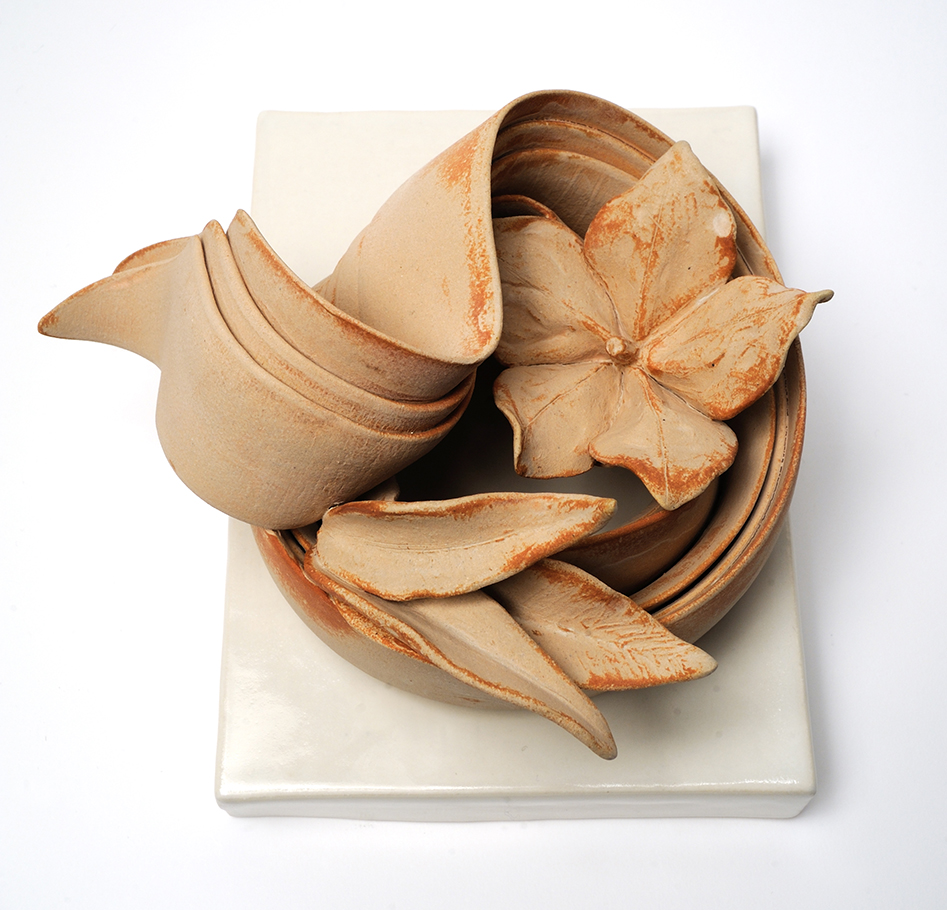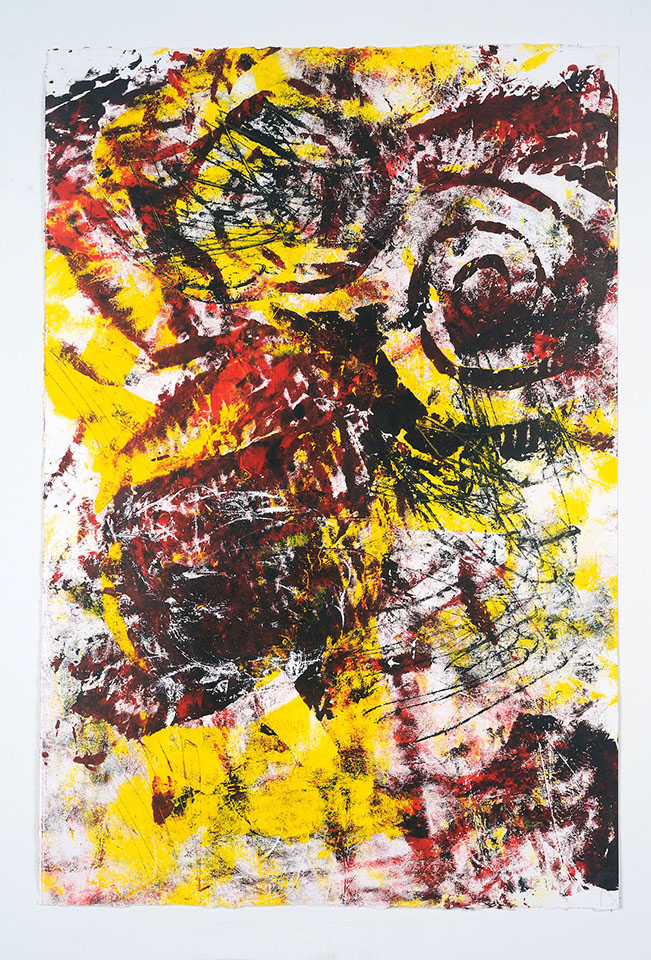Studio Notes
Phronesis by Sarah J. Hull
….the moment before the initial thought begins is just as important as the thought itself….
“Phronesis (Ancient Greek: φρόνησῐς, romanized: phrónēsis), translated into English by terms such as prudence, practical virtue and practical wisdom is an ancient Greek word for a type of wisdom or intelligence relevant to practical action. It implies both good judgment and excellence of character and habits, and was a common topic of discussion in ancient Greek philosophy, in ways which are still influential today.”
Phronesis by Sarah J. HULL
Silk, Cotton, Linen
21 x 13 x 1.25 in
Large cool white embroidered square with a strong diagonal from the top left to the bottom right centered on the top half of a 21” high raw linen caves, above a collection of smaller warm white embroidered squares with a diagonal from the top right to bottom left. The middle square is left blank revealing the embroidery ground.
See additional available work by Sarah on her Artist’s Page.
Ancient Queen Series by Adjoa Burrowes
Artist Statement
“This series references the honeybee and its endangered plight in the world. The textured layers recall the hexagon shape of the honey cells. Through my research I’ve learned that the honeybee has appeared as a symbol in cultures throughout the world and through all times. In this ongoing work I aim to draw attention to current environmental concerns and mans’ negative effect on the natural world. “
“Though I was born and raised in the city of Chicago, I have strong connections to the earth including the southern town of Warm Springs, Georgia where my parents were born. My summers as a child were spent in Michigan camping, swimming, picking berries, and playing in sprawling sand dunes. My strong memories in natural environments translate into themes in many of my abstract 2D works on paper.”
Visit Adjoa J. Burrowes page to see additional available work.
Monotype and the Art of Adjoa J. Burrowes
A print is a work of art that can be created on a surface like wood, metal, stone or glass and then printed on a press, by using a roller or even pressed by hand.
The monotype is a printmaking technique that lends itself to invention. Unlike other techniques such as lithography or etching where an image is fixed into the surface or “matrix”, an artist works with inks on a surface likes glass or metal. Because the image is not fixed, the artist can work with the materials by layering, incising into the ink, wiping and reapplying ink until the impression is pulled. When the artists runs the plate through a press or adds pressure to the plate by hand, the resulting print is a unique work of art.
The connecting thread through all of Adjoa J. Burrowes work is an intimacy with materials and invention through exploration and radical experimentation. The perfect creative process for a technique like monotype. Her use of materials is also intertwined with her themes of identity and the anxieties inherent in contemporary times. The reclaimed plastic used to create texture and layering in monotypes like “ Winds of Change”, “Behind the Eight Ball” and Run Down and Run Over” echo her concerns for the climate crisis and the damage wrought by overconsumption. Her hand cut stencils with spirals forms, and what appears to be scratching into the ink in her recent monotype “Changing Current” brings us back to a sense of wonder and admiration for the beauty of nature. It reminds us of the cycles of life and provide a glimmer of possibility and hope in the future.
Reference
Degas, A Strange New Beauty, Jodi Hauptman, The Museum of Modern Art, New York, 2016
To see other monotypes by Adjoa J. Burrowes visit her artist’s page.
Clay and the Work of Elizabeth Vorlicek

Garden Nest
Stoneware, porcelain, cone 6 oxidation
The history of ceramics goes back millennia. When an artist chooses to work with clay, they are not just in dialogue with the history of art but also the earth. Clay appeals to artists for its flexibility and durability. You can pinch, pull, stretch, tear, etc. So while it has a storied past in the decorative arts, the medium also appeals to the contemporary artists who explores ideas and create works that address the world in which they live in. Elizabeth Vorlicek references art history from Dutch Still Life painting to Duchamp’s ready-mades in her sculptural ceramics. What results is sculptural works that refer to objects and places in our everyday life but take us to a new and an unexpected world – A Poetry in Clay.
Visit Elizabeth’s artist page to see more of her work.

